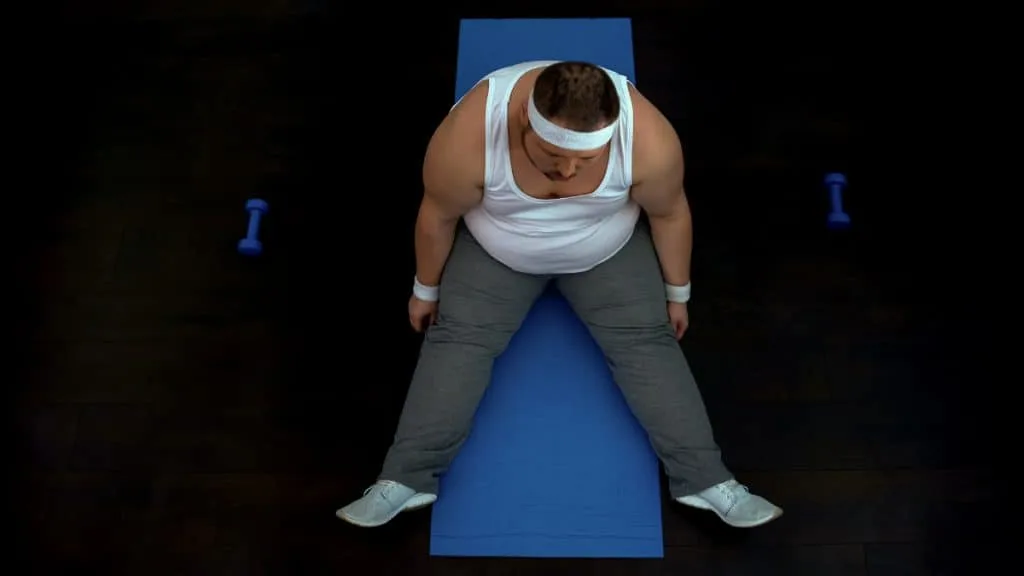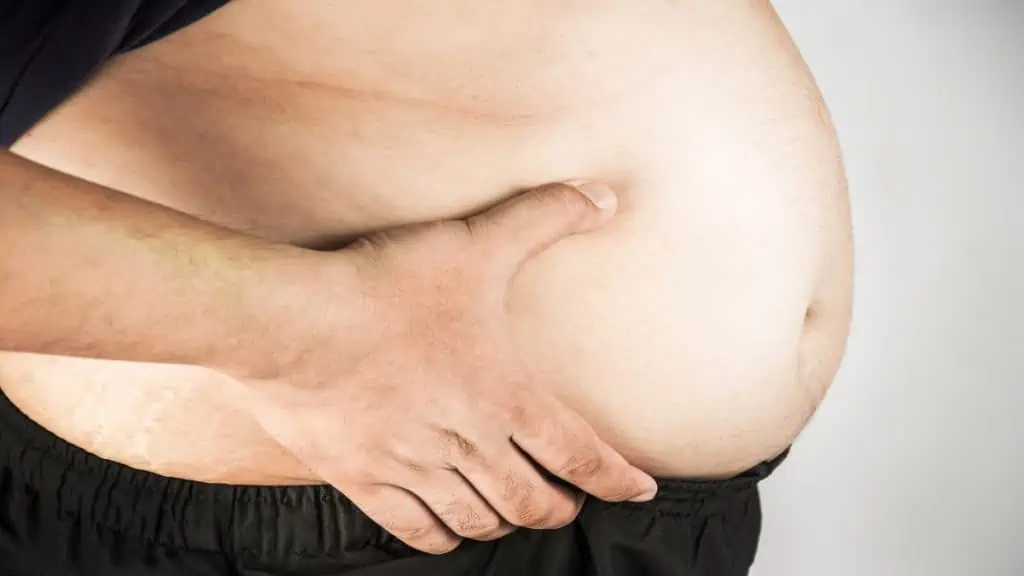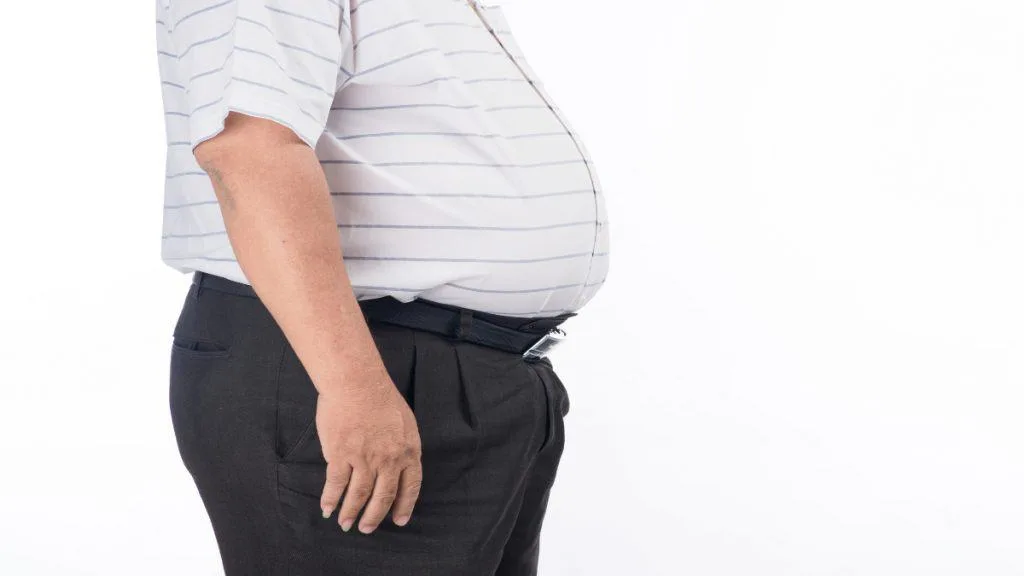As you probably know already, a 63 inch waist is far from the ideal waist circumference for living in peak health (or anywhere close to optimal health).
With this fact firmly in mind, this guide will give you the tools to reduce the size of your 63″ waist, which in turn will improve your physical (and perhaps mental) health, increase your fitness levels, and strengthen your bones and muscles.
The links below will take you to similar articles, where you can explore the effects of having other common waist measurements.
How can having a 63 inch waist damage your health?

Let’s start with how having a 63 inch waistline can affect your short-term health. Many researchers rightly focus on the long-term implications—heart disease, high blood pressure, type 2 diabetes—of walking around with a large waist. [1] However, living life with a 63 in waist can also cause some unpleasant short-term pains and problems.
For example, finding off the peg clothes that fit you well can be challenging when you have a 63 inch belly, especially if your other body parts, relatively speaking, aren’t as big.
Additionally, when you’re obese, there’s naturally going to be more pressure on your joints. Besides making simple tasks more strenuous and painful, carrying excess body fat, especially around your stomach, can also be a barrier to physical exercise.
This is why it’s so important to do any exercise that you can. [2] High-intensity workouts are obviously great for blasting fat, but they’re not suitable for everyone. If you currently live a sedentary lifestyle and spend more time sitting on the sofa than walking around, then you can actually see a big increase in energy expenditure by going for a simple daily walk of around 30 minutes.
If you have a 63 inch waist, how can you lose weight?

First off, try to identify the main culprits of your weight gain. For example, many obese individuals do just as much walking as slim people and yet gain weight because they overconsume calorie-dense foods.
So, if you struggle to control your food cravings, try to seek out tasty low-calorie recipes that contain plenty of protein and fiber. These two nutrients are highly satiating and will keep you feeling full, which in turn will make you less likely to indulge in unhealthy foods. [3]
But what if you just need some sugar now? I recommend keeping some easily-accessible fruits close to you. This way, you can devour a couple of satsumas and some grapes rather than a whole cake and some cookies.
If you lack the energy and motivation to exercise, this may change as you lose weight, which will naturally increase your energy and vitality. But in the short term, try and do the types of exercise that you most enjoy—or those that you can easily stick to.
If you know that you won’t feel like hitting the gym after work, try and at least commit to a short walk so that you can get out in the fresh air and boost your calorie expenditure. You can also buy cardiovascular exercise machines that you can use at home, which will give you more privacy while you work up a sweat (and which you can use while watching your favorite shows to make training less of a chore!).
How big is a 63 in waist, exactly?

Although you shouldn’t compare yourself to other people, especially online, where people typically look their best, a 63 inch waist is much bigger than average—by around 23-25 inches, to be precise (it depends on your age and gender).
But did you know that the taller you are, the smaller your 63″ waist will look?
The reason for this is that taller individuals have a longer torso. This means that their waists are more stretched out, which can make their stomachs appear slightly slimmer (although at 63 inches, nobody will have a genuinely slim stomach).
Conclusion and practical advice

If you want to reduce the size of your 63 inch waist, make sure that you’re burning more calories than you consume. There are many ways to do this, but it basically comes down to increasing your energy expenditure via exercise (which can be as simple as walking, remember) and lowering your food intake via moderate calorie restriction.
If you can lose 1-2 pounds per week (or even slightly more initially, if your body weight is really high), then that’s excellent progress. You’ll see some big changes in your body and waist if you can maintain even just a modest weekly weight loss.
References
- Doheny, K. (2012, June 5). Waist Size Alone May Predict Diabetes Risk. WebMD. https://www.webmd.com/diabetes/news/20120605/waist-size-alone-may-predict-diabetes-risk
- NHS website. (2021, November 29). Treatment. Nhs.Uk. https://www.nhs.uk/conditions/obesity/treatment/
- Westerterp-Plantenga, M. S., Lemmens, S. G., & Westerterp, K. R. (2012). Dietary protein – its role in satiety, energetics, weight loss and health. British Journal of Nutrition, 108(S2), S105–S112. https://doi.org/10.1017/s0007114512002589

